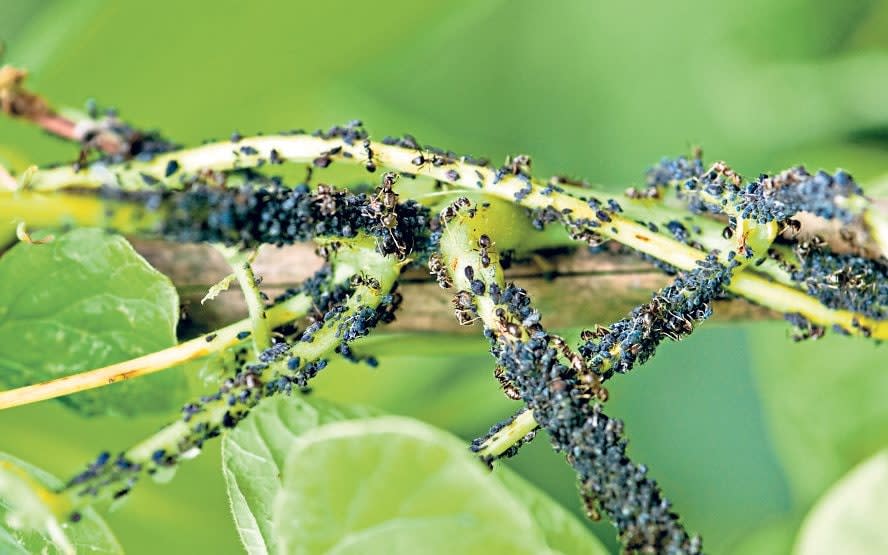Is it worth waging war on blackfly?

My Twitter and Instagram feeds, along with my allotment Facebook page, are busy with gardeners talking about aphids. If it’s not blackfly on their runner beans it’s greenfly on their roses.
Or random “clusters of evil” on anything from cardoons to dahlias. I watch, as gardeners swap organic tips for extermination – soap spray, a quick blast of the hose or pinch of finger and thumb. “Ooh, it’s a terrible year for them,” they say. “I’ll be lucky to get any beans at all.”
I wonder if it is a bad year for aphids or if we’re all just spending more time looking at them, in this year of staying at home? And whether those blasts of water or soap spray are necessary, whether the sticky residue of dead aphids on the fingers is worth it?
I wince when shop-bought bug sprays are mentioned, as most contain the neonicotinoid pesticides that do so much harm to bees. I haven’t “controlled” aphids in my garden or allotment for years. Do my plants die? No. Do I get beans? Oh, yes.
Researching this article, I conducted an “aphid audit” in my garden and allotment. I couldn’t find a single aphid in the garden and there’s virtually no blackfly on my allotment beans, despite neighbouring plot holders lamenting heavy infestations.
What is it about my garden and allotment that’s so different from my aphid-infested internet buddies? Is it just luck? Or could it be that wildlife gardening, particularly letting nature take its course, is control enough?
Honestly, I don’t know the answer. What I do know is this: in my garden the house sparrows have just had their third brood of the season. While the adults eat seeds, they feed their chicks invertebrates, particularly aphids.
I’ve watched them, every few weeks as each brood of eggs has hatched, picking through the garden for every juicy morsel they can find. No aphid cluster has been able to grow enough to become a problem because the sparrows haven’t let them. And if I removed aphids in spring I’d be denying baby sparrows a meal in summer. So I leave them. And I’m rewarded with absolutely no aphids. Thanks, sparrows.
On the allotment I did find a lot of black aphids on my parsnips, which I let flower and seed after I forgot to harvest them. But these will be a different species from the black bean aphid, Aphis fabae, so my beans are safe. What’s more, along with the aphids were also masses of ladybirds – seven-spot, two-spot and harlequins. Some were mating, others laying eggs, while the larvae of others were already tucking in to their favourite meal – aphids. I left them to it.
It’s not just house sparrows and ladybirds that eat aphids. Most hoverflies lay eggs on aphid infestations and their larvae gobble them up, as do lacewings (their larvae are so voracious they’re known as “aphid lions”). Wasps, too.
In fact, the wasps this year seem to be doing a good job of controlling the scale insect on my lemon tree. By washing, spraying or squishing aphids I’ve absolutely no doubt that gardeners are also destroying the very things that eat them. So let’s stop.
When I see aphids I look for ladybirds and lacewings. I don’t reach for the spray, I don’t have aphid blood on my hands. Could it be that relaxing and waiting is the best way to deal with these sapsucking “pests”? What if we spent more of this time we have at home looking for aphid lions over aphids, sparrows over sapsuckers? Could we all loosen our grip on the “control” we have on our gardens?
Really, what would be the worst thing to happen if you left them?


